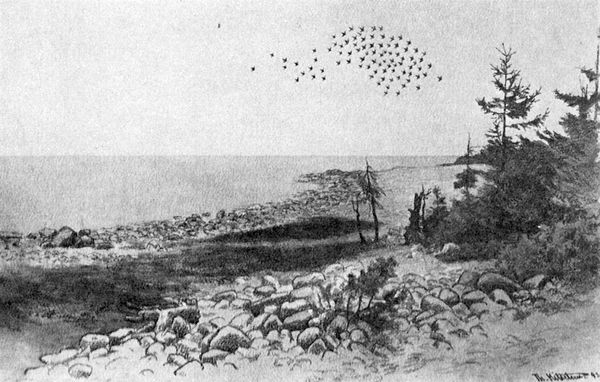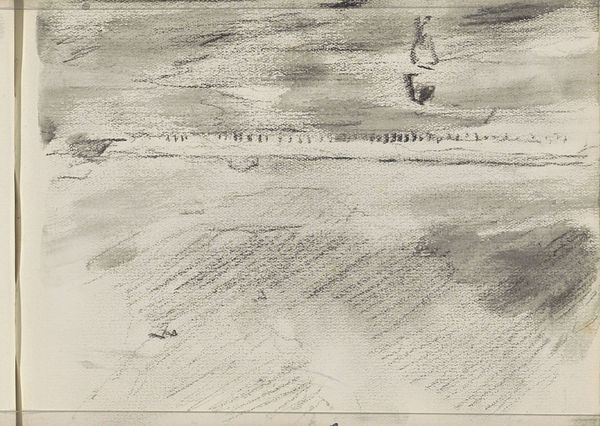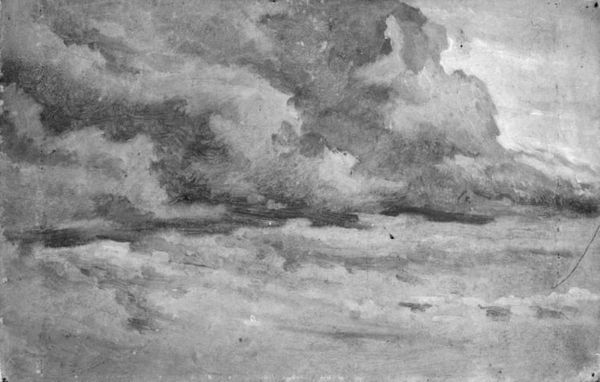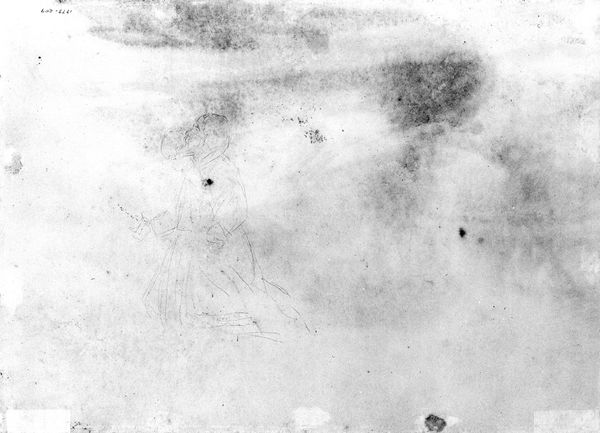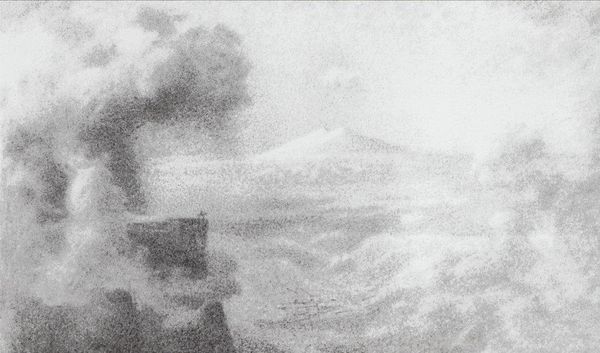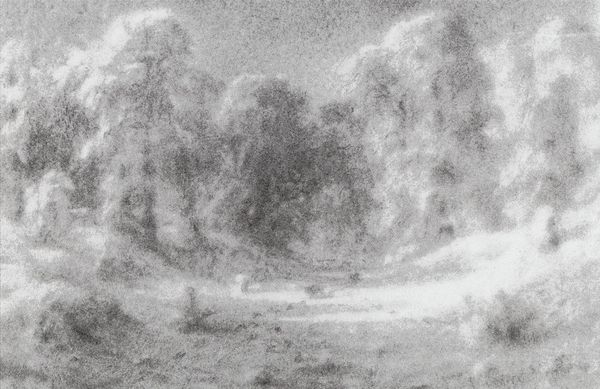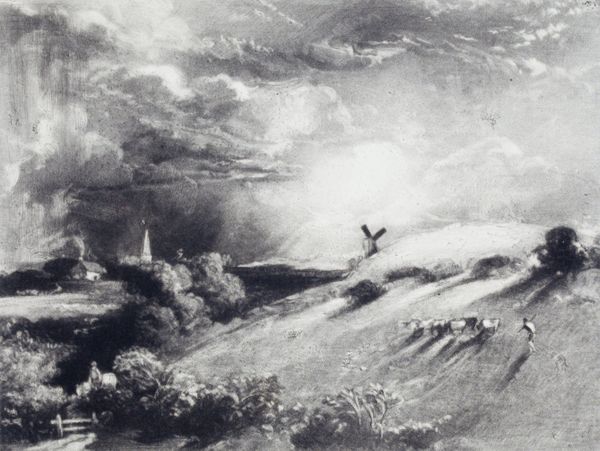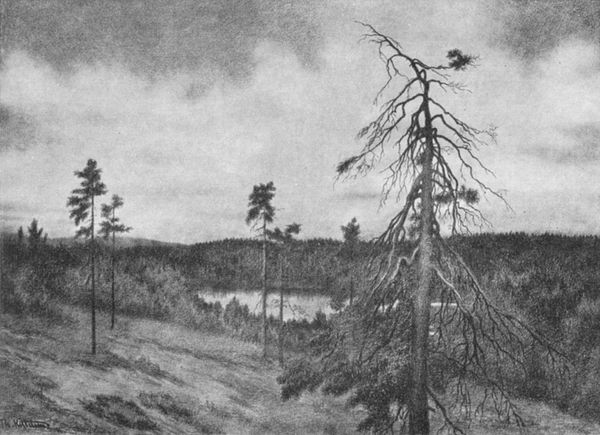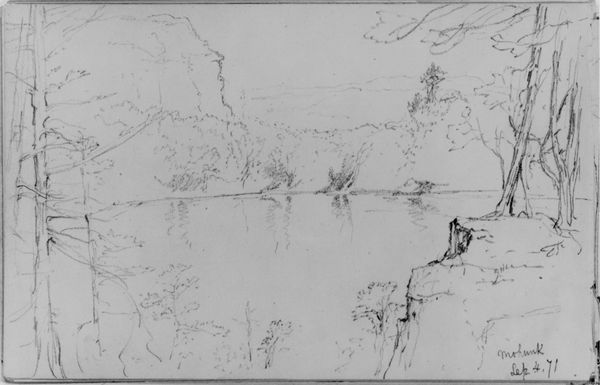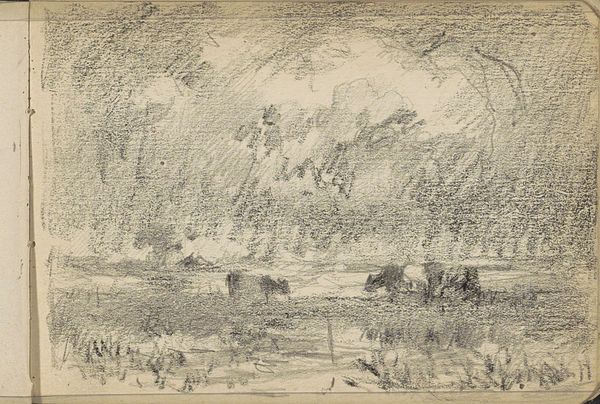
Dimensions: 90.6 cm (height) x 125 cm (width) (Netto)
Curator: As you stand here, take in Axel Sjöberg's oil painting, "The Beginning of Winter," thought to have been worked on between 1881 and 1903. It's a remarkable example of plein-air landscape painting, capturing a scene just as winter begins to take hold. Editor: It certainly evokes a sense of starkness and impending cold. The grey tones dominate, creating a muted, almost melancholic atmosphere. The flight of birds in the upper section seems almost desperate. Curator: The work very much represents a shift that was occurring at the time, of Scandinavian artists focusing on local landscapes rather than those found abroad, something which fed into developing a distinctly local form of identity. It highlights the significance of land to ideas of nationhood and belonging, which grew intensely at the turn of the century. Editor: Absolutely, and this particular portrayal of the land—austere, almost unforgiving—might reflect deeper societal anxieties about resources, survival, and the changing relationship between humans and the environment. Look how vulnerable the slender, bare trees seem. Curator: We see similar themes echoed in contemporary Scandinavian literature and theater of the time. Sjöberg's dedication to capturing the subtleties of light and atmosphere place this painting squarely within the Impressionist tradition, though it feels far more restrained than its French counterparts. Its palette is decidedly more muted, reflecting the unique light and atmosphere of the Nordic region. Editor: Indeed, one gets a sense of an oppressive atmosphere. Even though it is 'The Beginning of Winter,' one might argue it represents a metaphor for endings more broadly. The painting subtly encourages the viewer to question dominant narratives linked to landscape. What and who are included in our art institutions and how does this inform our reading? Curator: It’s interesting that you read the melancholy as representative of a societal anxiety. When exhibited, Sjöberg’s art was highly successful in representing an emerging sense of cultural identity. I wonder whether it is, at the same time, something that suggests precarity or risk, even as the work's reception spoke to something stable or grounded. Editor: Well, art often serves multiple purposes simultaneously, both reinforcing and questioning prevailing ideologies. Thank you. That gives me a fresh lens for engaging with the artwork, considering these aspects. Curator: It is one of the qualities I enjoy about discussing art and how it encourages me to approach historical narratives in a multi-faceted way.
Comments
No comments
Be the first to comment and join the conversation on the ultimate creative platform.
